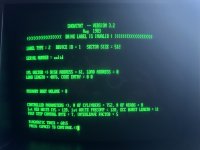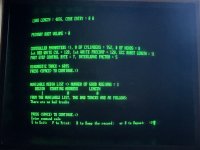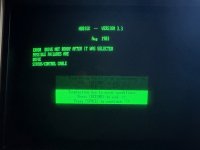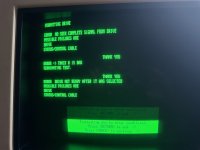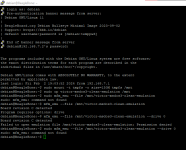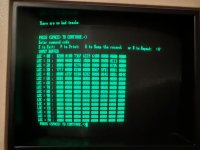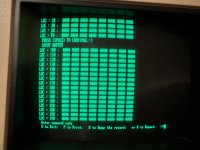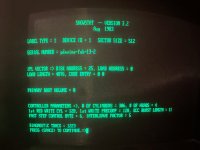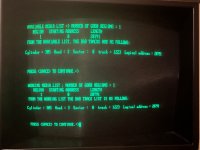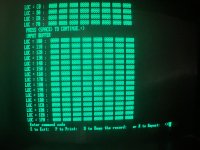1302L
Experienced Member
- Joined
- Aug 8, 2023
- Messages
- 175
Hi djg,
here we go with a fresh thread,
Thanks and best regards,
Martin.
here we go with a fresh thread,
I got a directory.Didn't print too many lines. Did you get a directory or did you get an error?
YesI think you showed DIR worked previously.
I was getting the X98 most of the time (Sometimes X06 [Track 00 not found] as well), now it is solely the X98Also did you previously get X98 (Bad Hard Disk Label) when trying to boot or did you get some other error?
Downloaded the from your website, being curious, are there other sources for V9K HDD images?Where did the emulator image you are using come from?
Yes!This thread is mixing several things so getting unwieldy to track. We may want to start a separate thread.
I used screenshots for the shorter ones and copied the output into a text file for the longer ones, I copied just the parts which had been displayed after I executed the command. Do you wish to have the entire output from logging into the emulator? I thought it would be more clearly arranged this way and jut related to the command I was typing.Also the files you attached only have some of the emulator output. Did you use the script command which should have had all or did you capture some other way? If some other way is this all the output related to the commands you ran?
Yes, I noticed this too, I will try to trigger the low seek times.Bad thing is the low seek times went away so debug output doesn't show what I was hoping to see. If you can find any way of triggering the low seek times that's what I was hoping to see.
I tried this several times, no output by the emulator on putty and no reaction o the machine; but there might be an issue as I have to execute DEBUG from Floppy, does the machine try to read the HDD sectors anyway or it just seeking on the floppy?Did the L command trying to read single sector work for any sector address? Did it work with the previous software version? What error is reported if it doesn't work?
Thanks and best regards,
Martin.

